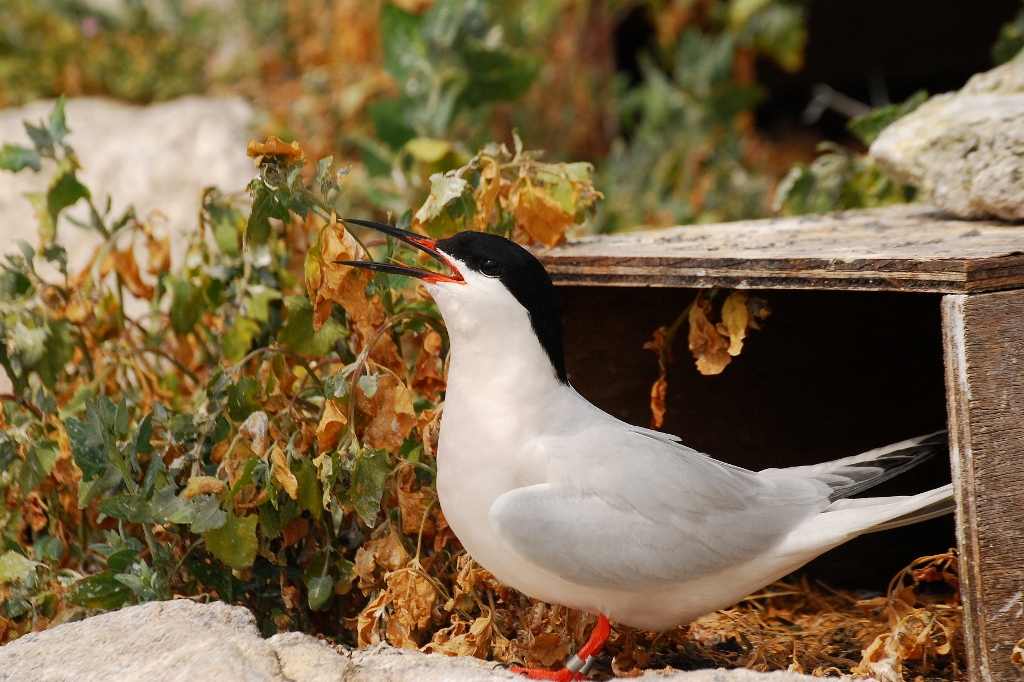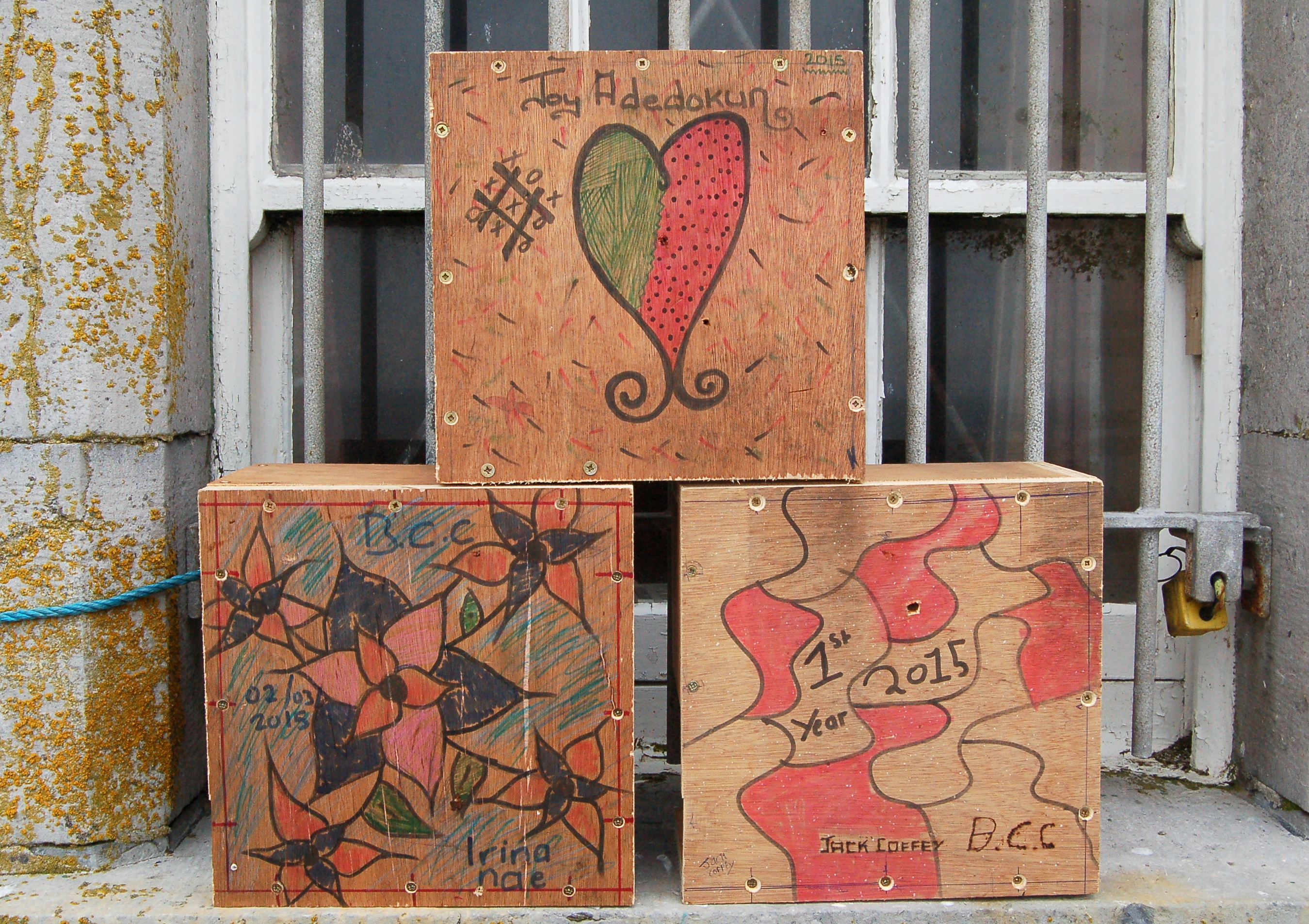Authors Brian Burke and Darren O’Connell discuss the conservation of roseate terns at Europe’s largest colony on Rockabill Island in Dublin, Ireland, with their latest research highlighting the important role artificial nestboxes have played in the species’ population growth and recovery.
The role of a tern warden on Rockabill Island has been described on more than one occasion as a dream job. A summer spent on a small little island in the Irish Sea, several kilometres offshore, no people (with the exception of 1 or 2 colleagues), thousands of nesting seabirds including the rare roseate tern, majestic sunsets over the Mourne mountains to the north, the glowing lights of a capital city to the south and, with a bit of luck, some fine summer weather for the majority of your tenure.

The expectation, however, doesn’t quite match the reality during the first few weeks, before any terns or summer weather have arrived: getting down on your hands and knees clearing an island’s worth of shrubs plant-by-plant; deploying somewhere between 700 and a thousand nestboxes; carefully nestling each nestbox into the ground, weighed down by the largest rock within arm’s reach.
By the middle of May, the wardens are arguably more tired than the birds that have just migrated from West Africa!

The birds show their gratitude by occupying every bit of available open nesting space with 2,000 pairs of common terns and 1,700 pairs of roseate terns utilising the hundreds of nestboxes put out for them, as well as every shaded area, crack, crevice and rocky overhang they can comfortably sit under. Nestboxes are small wooden structures, which serve to offer a protected home for the summer to welcome the Roseates back from their travels!

The deployment of nestboxes has been a key action in the conservation efforts for roseate terns on Rockabill, allowing for a much higher density of nests than could reasonably be achieved otherwise; it has provided shelter from predation, adverse weather and both inter- and intraspecific aggression.
The nestboxes are 30x30x15cm wooden boxes with an opening at the front. Their popularity with roseate terns may be because they mimic an ideal natural nesting site; unlike common and Arctic terns, roseate terns prefer to nest in sheltered locations that are barely visible from above or from a distance. In a natural setting they nest beside overhanging rocks, in natural crevices and under vegetation if it’s not too thick.
Given the degree in which they are losing their nesting habitat, roseate terns are now confined to very few locations with limited suitable nesting spots. It is therefore vital that conservation efforts ensure they can use that space to its fullest extent.

Rockabill Island is roughly the size of a football pitch and so space for nesting terns is very tight! By deploying nestboxes across the flat areas of Rockabill we can massively increase the number of suitable nesting spots.
They can be tightly packed, roughly 15cm apart, often arranged in continuous terraces where space allows. In the height of summer Rockabill can resemble a tern apartment block! The number of nestboxes deployed on Rockabill has increased in line with the increase in nesting pairs and 40-50% of pairs nest in the boxes each year – which amounts to 70-80% of nestboxes deployed.

Where nestboxes aren’t used, it’s often due to poor placement; an entrance too close to that of a neighbouring box or a common tern pair nesting near the entrance. Boxes are relatively cheap and easily constructed, and a local school in Balbriggan, Dublin, has built and donated over a thousand nestboxes over the years to the project! Similar nestboxes have been provided at colonies in north-west Europe and the eastern seaboard of the USA and Canada to increase the density and breeding success of Roseate Terns.

Measuring impact
For any conservation initiative, it is extremely important to assess its impact to ensure you are placing your efforts in the right area. This is particularly true for something like nestboxes, which are being used in several countries for a very vulnerable species.
Using 15 years of monitoring data based on daily nest visits, we analysed the breeding performance of roseate tern pairs utilising artificial nestboxes in comparison to those in open ‘natural’ nests on Rockabill.
The results showed a resounding positive impact of nestboxes. They were used ahead of open sites early in the season, showing they were the preferred nesting site. Eggs laid in nestboxes were more likely to hatch and chicks from nestboxes were more likely to survive until they were juveniles capable of making the migration south for the winter.

Our results emphasise the importance of nestboxes to the roseate terns on Rockabill and their likely value in similar colonies elsewhere in the species range, particularly in the temperate North Atlantic.
Roseate terns have had a troubled recent past. The species had been declining since the 1970s and even into the 1990s, a number of colonies were lost. However, the dedicated work on Rockabill ensured that this colony bucked the wider trend.

It began in 1989, with just 152 pairs of roseate terns out of a total Irish and UK population of 300. Since then the population has grown consistently under the careful watch of the Rockabill project wardens, bringing the total of nesting pairs to over ten times its number in the late 1980s! The colony also playing a vital role as a population source for the other major European colonies at Lady’s Island Lake in Wexford (Ireland) and Coquet Island in Northumberland (England).
Nestboxes and other habitat management work have helped make this happen, providing some rare conservation good news, and demonstrated that over 30 years of patient work can bring rewards.
Read the full article: “Nestboxes augment seabird breeding performance in a high-density colony: Insight from 15 years of monitoring data” in Issue 3:3 of Ecological Solutions and Evidence.
